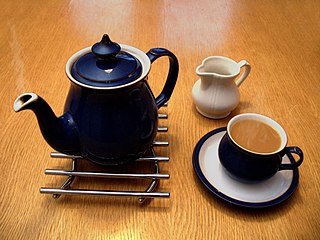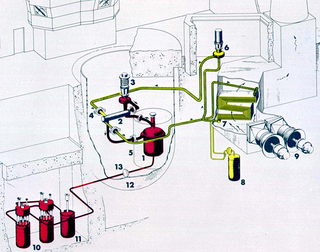 W
WAn experiment is a procedure carried out to support or refute a hypothesis. Experiments provide insight into cause-and-effect by demonstrating what outcome occurs when a particular factor is manipulated. Experiments vary greatly in goal and scale, but always rely on repeatable procedure and logical analysis of the results. There also exist natural experimental studies.
 W
WThe Aircraft Nuclear Propulsion (ANP) program and the preceding Nuclear Energy for the Propulsion of Aircraft (NEPA) project worked to develop a nuclear propulsion system for aircraft. The United States Army Air Forces initiated Project NEPA on May 28, 1946. NEPA operated until May 1951, when the project was transferred to the joint Atomic Energy Commission (AEC)/USAF ANP. The USAF pursued two different systems for nuclear-powered jet engines, the Direct Air Cycle concept, which was developed by General Electric, and Indirect Air Cycle, which was assigned to Pratt & Whitney. The program was intended to develop and test the Convair X-6, but was cancelled in 1961 before that aircraft was built. The total cost of the program from 1946 to 1961 was about $1 billion.
 W
WThe Eddington experiment was an observational test of General Relativity, organised by the British astronomers Frank Watson Dyson and Arthur Stanley Eddington in 1919. The observations were of the total solar eclipse of 29 May 1919 and were carried out by two expeditions, one to the West African island of Príncipe, and the other to the Brazilian town of Sobral. The aim of the expeditions was to measure the gravitational deflection of starlight passing near the Sun. The value of this deflection had been predicted by Albert Einstein in a 1911 paper, and was one of the tests proposed for his 1915 theory of General Relativity. Following the return of the expeditions, the results were presented by Eddington to the Royal Society of London, and, after some deliberation, were accepted. Widespread newspaper coverage of the results led to worldwide fame for Einstein and his theories.
 W
WIn the design of experiments in statistics, the lady tasting tea is a randomized experiment devised by Ronald Fisher and reported in his book The Design of Experiments (1935). The experiment is the original exposition of Fisher's notion of a null hypothesis, which is "never proved or established, but is possibly disproved, in the course of experimentation".
 W
WThe Molten-Salt Reactor Experiment (MSRE) was an experimental molten salt reactor at the Oak Ridge National Laboratory (ORNL) researching this technology through the 1960s; constructed by 1964, it went critical in 1965 and was operated until 1969.
 W
WColloquially, room temperature is the range of air temperatures that most people prefer for indoor settings, which feel comfortable when wearing typical indoor clothing. Human comfort can extend beyond this range depending on humidity, air circulation and other factors. In certain fields, like science and engineering, and within a particular context, room temperature can mean different agreed-on ranges. In contrast, ambient temperature is the actual temperature of the air in any particular place, as measured by a thermometer. It may be very different from usual room temperature, for example an unheated room in winter.
 W
WWORF is a new data storage method which allows users to write data once and allows storage of the users data without ever being refreshed. This differs from current digital storage techniques such as drives that need to be re-written often to prevent loss or corruption of data. WORF has the potential to store data forever and is currently being tested on the International Space Station (ISS).